Madrid (Spain) – the most detailed information about the city with photos. Madrid’s main attractions with a description, guides and cards.
Contents
City of Madrid (Spain)
Madrid is the capital of Spain and the largest city in the country. it modern and noisy metropolis, located almost in the center Iberian Peninsula. Madrid – the third largest city European Union. He constantly buzzes like a disturbed beehive and filled with vigorous activity and life that does not freeze even at night. The capital of Spain may not be enough the recklessness of Barcelona and the charm of Andalusia, but energy and atmosphere of the city, its cultural and artistic Heritage is definitely the reason to visit it.
Madrid with its architecture is a bit like Paris: wide Avenues and beautiful monumental buildings, squares, parks and museums. But despite the rich history, there are few attractions, symbols, which are in the same Paris, Rome or Barcelona. Madrid can rightfully be considered one of the cultural capitals of Europe. For centuries, the Spanish crown has accumulated masterpieces of art that are now on display in numerous museums. Also the capital of Spain is famous for its cuisine and nightlife. by life. The concentration of nightlife (clubs and bars) is just rolls over.
 Panorama of madrid
Panorama of madrid
- Geography and climate
- Best time to visit
- Practical information
- Story
- How to get there
- Shopping and shopping
- Food and drink
- sights
- Video
- Maps and guides
- Comments and reviews
Geography and climate
Madrid is located a little northeast of the geographical the center of the Iberian Peninsula at the foot of the mountain range Sierra de Guadarrama on the banks of the small river Manzanares. Height above sea level – 667 meters.
The climate is continental with hot, dry summers and quite in the cool winter. Madrid is much colder than Mediterranean coast. Winters are sometimes quite cold. and snowy. But, mostly, temperatures even in the cold period positive.
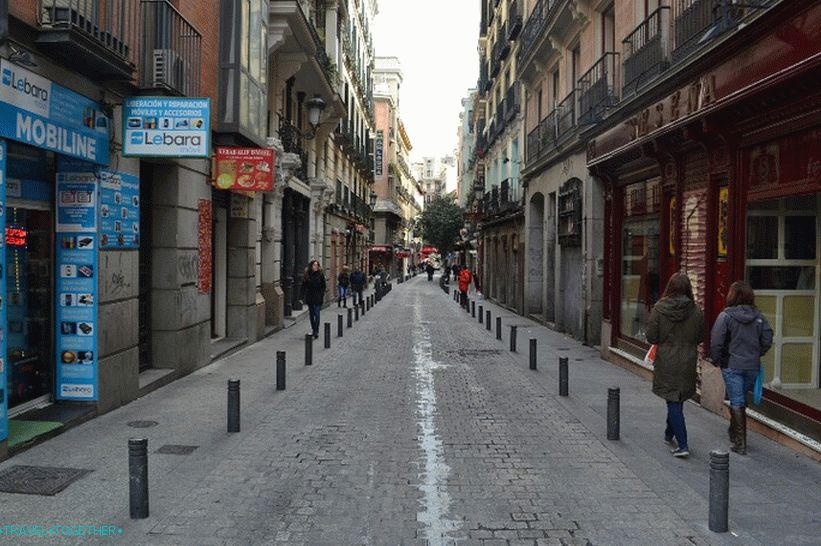 Streets of madrid
Streets of madrid
Best time to visit
The best time to visit Madrid is spring and autumn (off season). In summer it can be very hot and in winter it is quite cool.
Practical information
- Population – 3.1 million people.
- The area is 604.3 square kilometers.
- The language is Spanish.
- Currency – Euro.
- Visa – Schengen.
- Time – Central European UTC +1, in summer +2.
- Shops are open from 8-9 am to 8-10 pm. Some shops may not work from 14.00 to 17.00 (siesta) and on Sunday.
- In Madrid you can drink tap water.
Addresses of tourist information centers:
- Plaza Mayor, 27 (Casa de la Panadería)
- Plaza de Neptuno
- Ronda de Atocha, s / n (junto al Museo Reina Sofía)
- Plaza de callao
- Paseo de la Castellana, 138 – Junto al Santiago Bernabéu
- Plaza de Cibeles, 1 (Palacio de Cibeles)
- Avenida Hispanidad
- Calle Leganitos, 19
Story
The first mention of the city dates back to the 10th century, when the emir Toledo Mohammed I founded the fortress Madzhirit here. Around the fortress grew a small town, which in the 11th century was conquered by Alfonso VI. From the name of the old Arab fortress is likely to occur the modern name of the city.
Until the 16th century, Madrid was a provincial Spanish city, the development of which largely depended on the state of relations of the Arabs and Spaniards. That all changed in 1561, when King Philip II brought here the capital of Spain.
 Prospectuses Madrid
Prospectuses Madrid
The golden age of Madrid came under King Charles III of the dynasty Bourbons. At this time, famous architects were invited, which significantly transformed the appearance of the city. Madrid received many buildings in the neoclassical style and was significantly landscaped. In 1808, Madrid was captured by the troops of Bonaparte. A few years later the war of liberation began, which led to the revolution. Later Ferdinand VII became king of Spain. With his daughters Isabella II had almost all the city fortifications demolished and the gate to ensure the rapid growth of the city.
Further serious restructuring of Madrid happened at the end of 19 – early 20th century. The capital of Spain received wide avenues and spacious squares, and in architecture soloed the modern style. In the 40s By the 20th century, many historical buildings and monuments were damaged during the civil war. After Franco’s death and the end of his dictatorship period Spain became constitutional monarchy.
How to get there
Getting to Madrid is not difficult. This is one of the largest transport centers of Europe. The airport is located 13 km from the center. and has as many as four terminals. The most convenient way to get to Historical center are round-the-clock express buses, that take you to the main railway station (Atocha). The fare is 5 euros. Payment in cash to the driver. Cost of taxi about 30 euros. 10 minutes walk from Terminal 1 subway stop (line 5 – green line), with which you can get straight to the center. In addition, you can use line 8 (pink line), get to the station Nuevos Ministerios and further from transfers to the center.
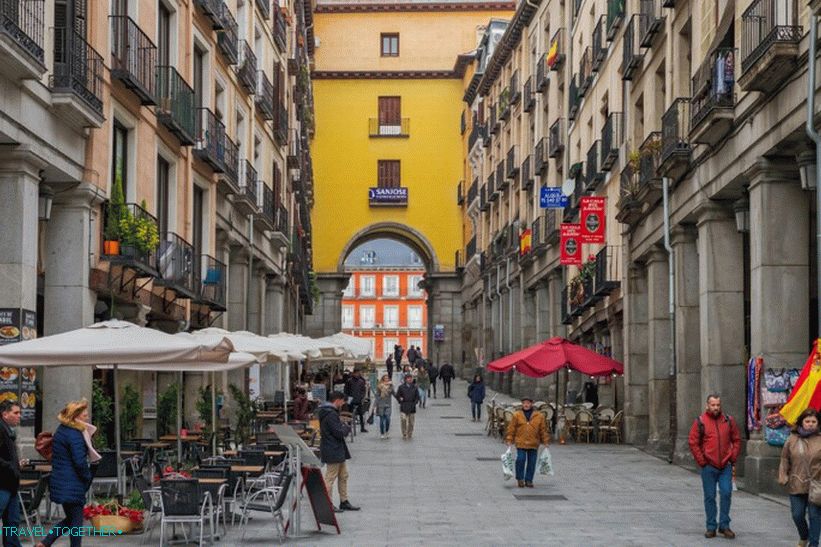 Streets Madrid
Streets Madrid
The capital of Spain is connected by rail with almost all major cities of Spain and Europe: Barcelona, Paris, Milan, Valencia, Lisbon and others. Bus service is also well developed. message.
Madrid public transport is considered one of the best in Europe. The length of the metro lines is inferior only London subway. Metro and buses have a single ticket. Ticket for the fare of five stations costs 1.5 euros, for ten – 2 euros. Can buy a ticket for 1,2,3 … 7 days. A few words about Madrid traffic – we really do not recommend moving around the city by car, because downtown often problems with parking and traffic jams.
Shopping and shopping
Shopping areas and markets:
- Sol-Salamanca (area of Gran Vía street) – the most popular district for shopping. On Calle Ortega you can find a lot of brand and designer shops. Here is one of the largest shopping centers in Spain – El Corte Inglés.
- Chueca (Fuencarral Street) – the most avant-garde and modern part of madrid. Here you can find many shops and restaurants.
- Calle Toledo – shops with traditional Spanish goods.
- El Rastro is the largest flea market that operates along Sundays.
- El Mercado de San Miguel is a traditional market.
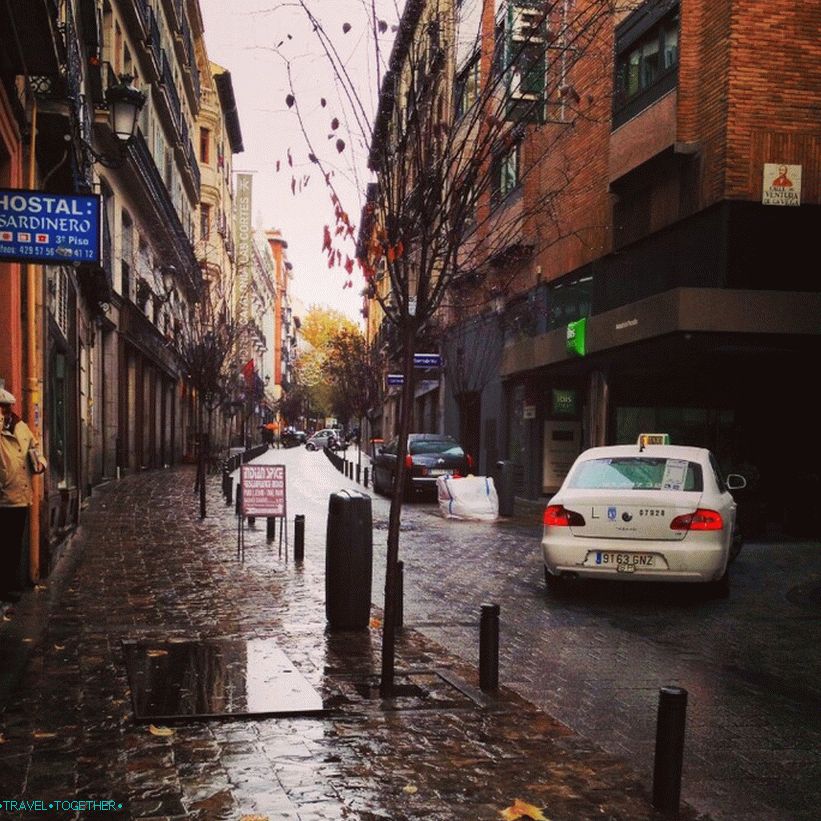 Autumn in Madrid
Autumn in Madrid
In the suburbs of Madrid at Calle Juan Ramón Jimenez 3, Las Rozas is a great outlet.
Food and drink
Madrid is famous for its food and dishes of typical Spanish cuisine. From the traditional dishes should try:
- Gallinejas – roast lamb
- Callos a la Madrileña – beef with spices in a pot
- Cocido Madrileño – stew with chickpeas and vegetables
- Oreja de Cerdo – garlic pork ears
- Sopa de Ajo – Garlic Soup
From traditional products worth trying meat products (for example, jamon), Spanish wine.
We do not recommend buying the famous paella in the street. small restaurants.
sights
The main attractions and the most interesting places Madrid
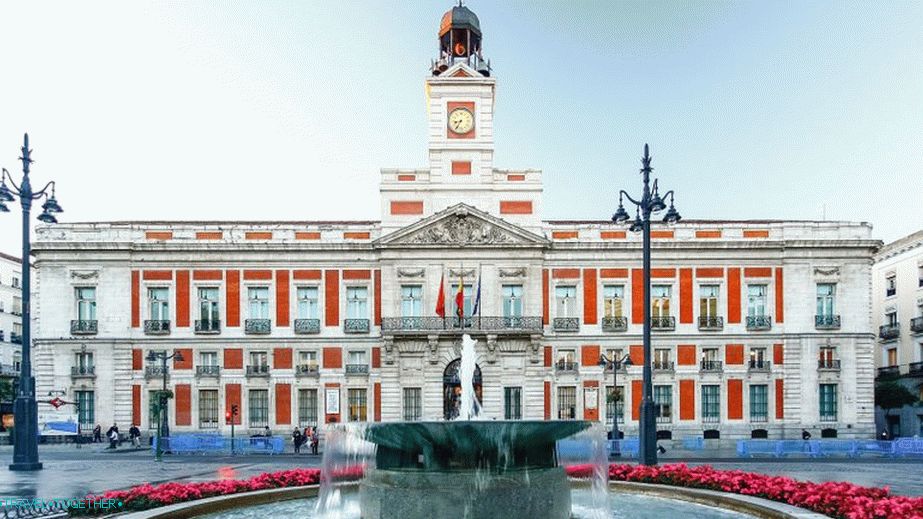 Puerta del Sol
Puerta del Sol
Puerta del Sol (“Gate of the Sun”) – one of the most famous squares of Madrid and one of the busiest places in the capital of Spain. This is the central point of the city and the radial center of all Spanish roads (zero kilometer). In the Middle Ages there were one of city gates that were oriented to the east. Modern form Puerta del Sol received during the reign of Isabella II.
One of Symbols of Madrid – sculpture “The Bear and the Fruit Tree”
Sights:
- Large equestrian statue of Charles III.
- The 20-ton statue “The Bear and the Strawberry Tree” is one of characters of the capital of Spain.
- 18th century post office building with a clock.
On the Puerta del Sol Square begins one of the main shopping streets of Madrid – Preciados.
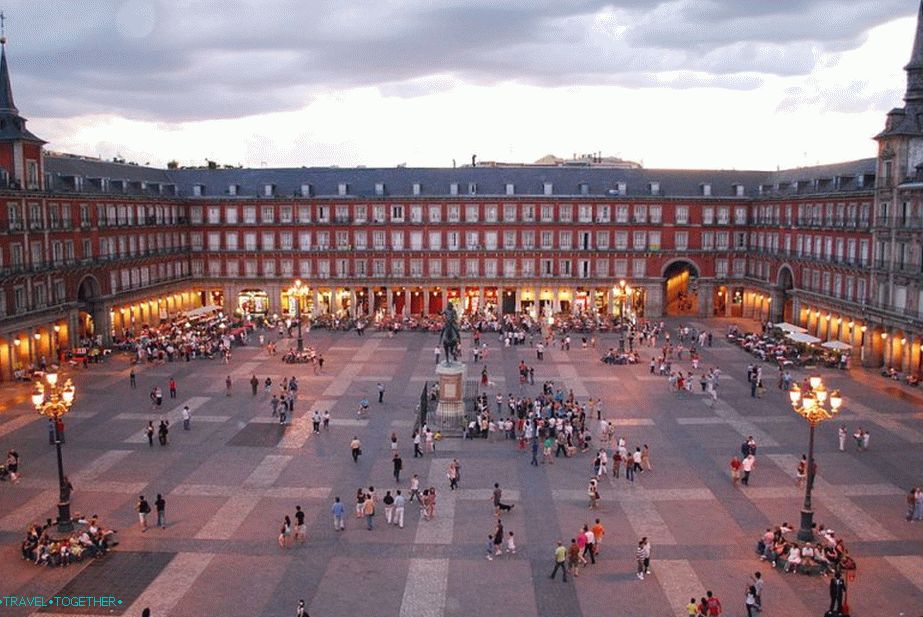 Plaza Mayor
Plaza Mayor
Plaza Mayor (Main Square) – a grand square with arcades, one of the most popular places in Madrid. It was founded in the 17th century in period of the rule of Philip III. The square has a rectangular shape 129 94 meters and is made in the same style of Spanish Baroque. On The Plaza Mayor has 9 streets, more than 100 buildings and 400 balconies. AT past various ceremonies and bullfights were held here. AT currently on the Plaza Mayor are traditional shops and cafe, held the Christmas market.
Sights:
- Bronze statue of Philip III installed in the first half 20th century.
- Casa de la Panadería – a building on the north side of the square with corner towers. It was built during the reign of Charles II.
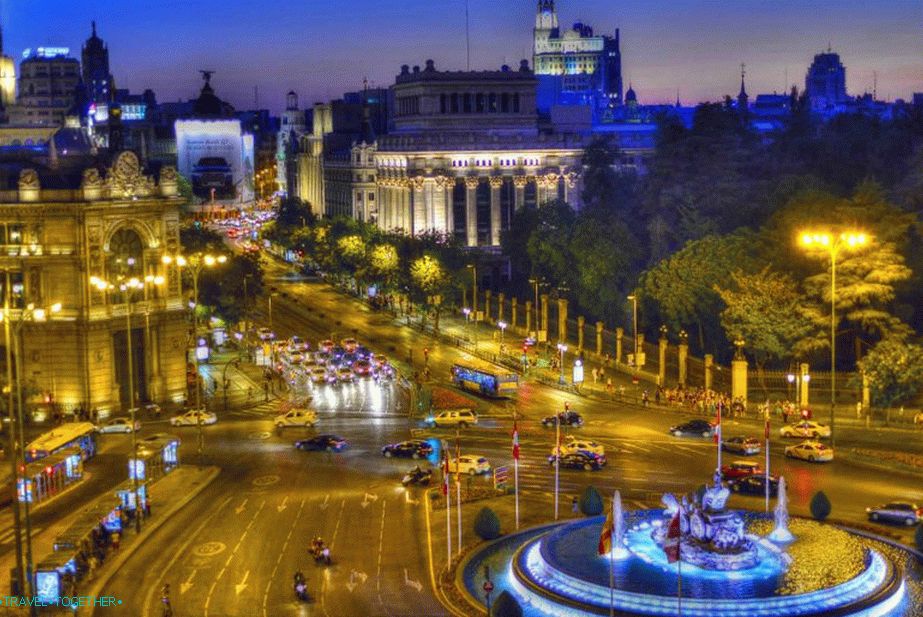 Cibeles Square
Cibeles Square
Cibeles is one of the most emblematic places in the Spanish capital. The square is located at the intersection of Alcala, Paseo de Recoletos and Paseo del Prado. In the center of the square is the famous fountain, dedicated to the Roman goddess of nature. This marble sculpture is one of the important symbols of Madrid. This fountain is celebrated their victories are fans of Real Madrid. In each of the four corners the squares are dominated by historic buildings built at the end of the 18th and early 20th century.
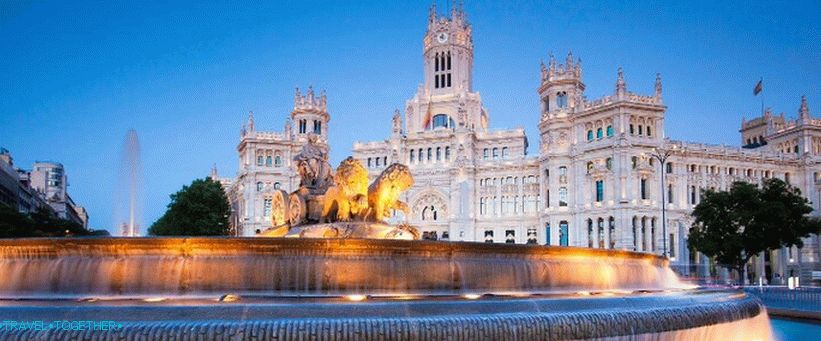 Palace of Communication
Palace of Communication
Sights:
- Marble fountain of the 18th century with a sculpture of the goddess Cybele
- The Palace of Communications is one of the most beautiful buildings of the Cibeles Square, which is now located city hall.
- Paseo del Prado
- Palace Linares – Baroque palace of the 19th century.
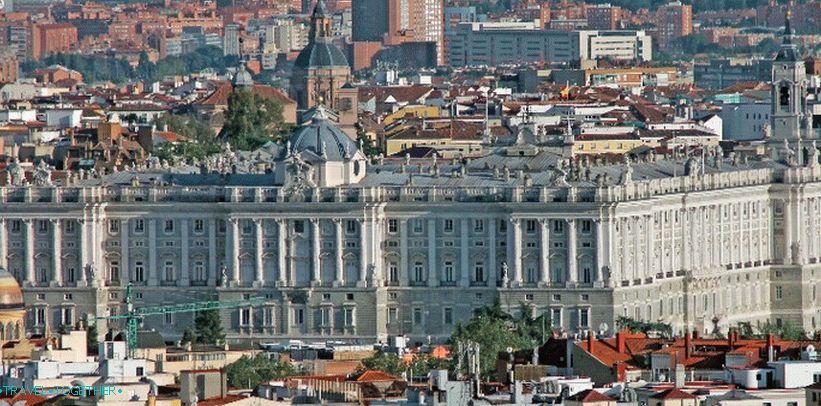 Royal palace
Royal palace
Royal Palace – one of the main attractions Madrid This monumental building was built in the 18th century by Versailles pattern. Interestingly, the palace is not official residence of the King of Spain, and is used mainly for receptions and ceremonies. The palace is often mistakenly called the Palacio de Oriente. because of the close proximity to East Square.
In the 9th century on the site of the modern building there was an Arabic the fortress of the Muslim state of Toledo. In the 16th century, kings Spain built the Alcazar castle, which was destroyed by fire in Christmas Eve in 1734 A new building began to be built when Felipe V. The model was the famous Versailles. Official the palace became the residence in 1764. For interior decoration used Spanish marble and mahogany. Interior decorate murals and paintings by leading artists of the time – Giakino, Tiepolo and others. Inside the palace is the armory and the royal pharmacy.
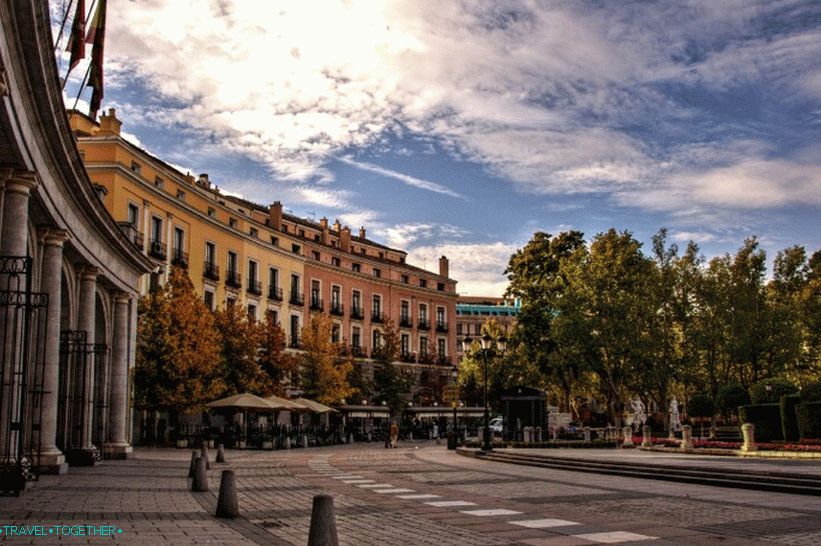 Plaza de oriente
Plaza de oriente
Plaza de Oriente (Oriental Square) – Square on the east side of the royal palace. Was formed in the first half of 19 century. In the center is a monument to Philip IV. Also on the square installed sculptures that are widely known as gothic kings. The collection of sculptures has twenty pieces corresponding to the five kings of the Visigoths and the fifteen kings of Spain period of the Middle Ages. An opera house is located on the square. theater.
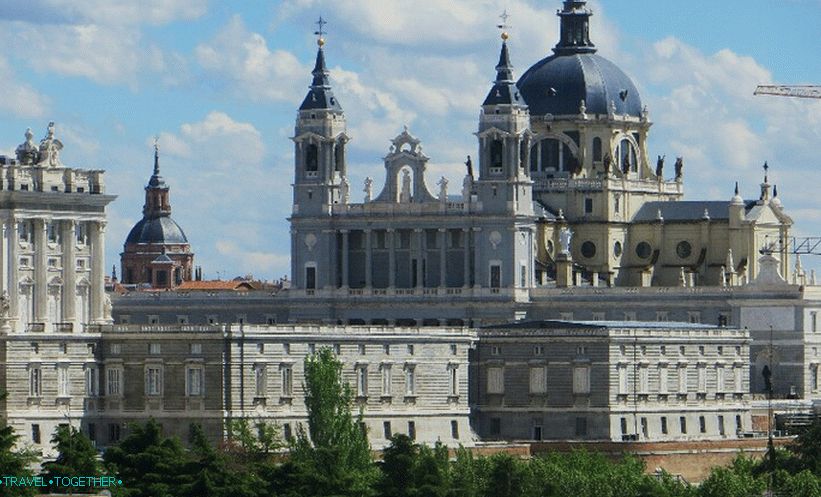 Cathedral Cathedral
Cathedral Cathedral
The Cathedral (Almudena Cathedral) is the main temple of Madrid. The construction of the cathedral was begun in 1884 under Alphonse XII and completed only in 1993. Religious building was consecrated John Paul II. The interior of the cathedral is made in neo-gothic style. Interestingly, the temple was built on the site of an ancient mosque.
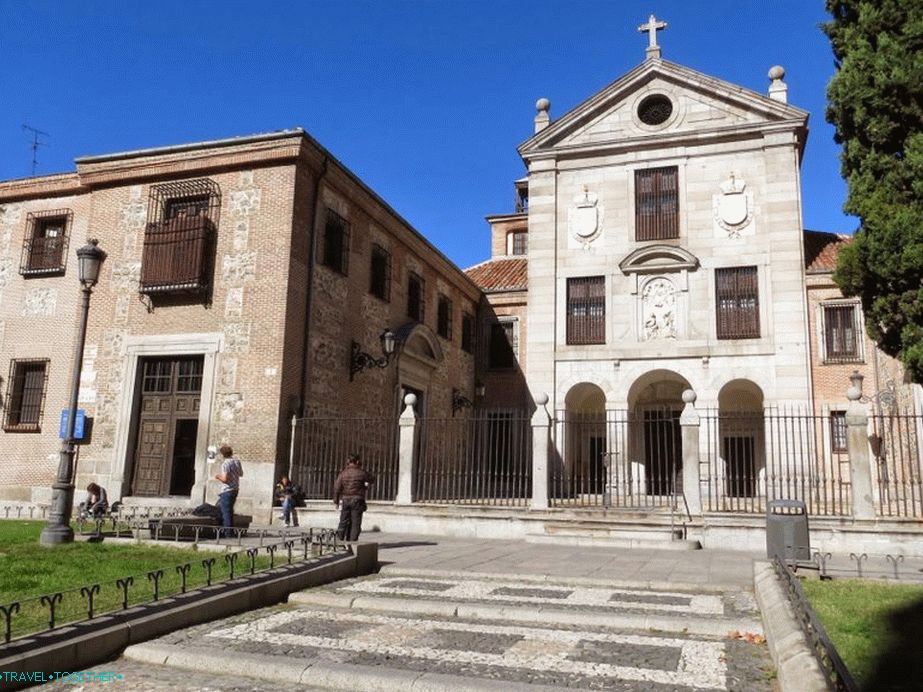
Monastery of Encarnacion – Augustinian monastery, founded in early 17th century. The building was built in the style of Madrid Baroque brick and stone.
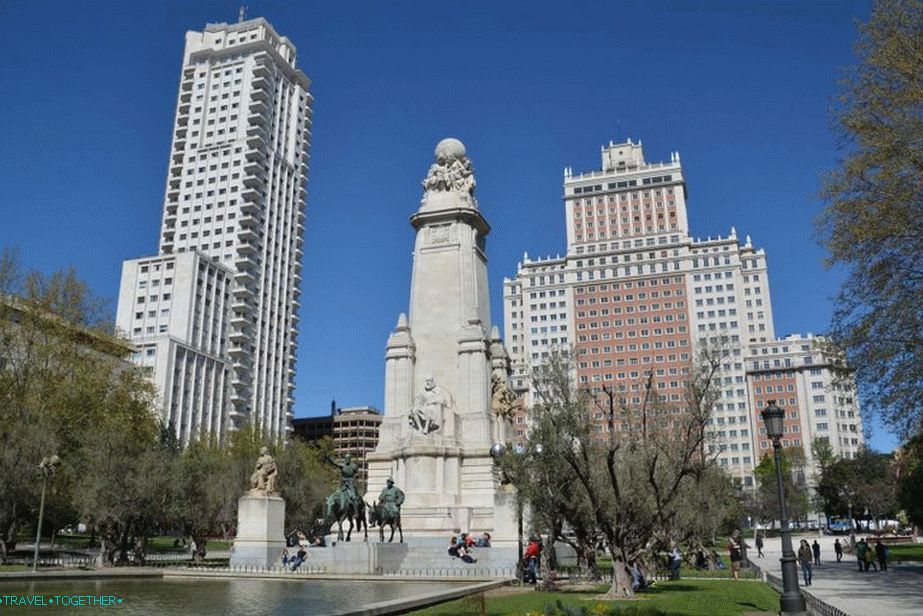 Square Of spain
Square Of spain
The Plaza of Spain is located near the Royal Palace and Plaza de Oriente. Its main attraction is Monument to Cervantes.
 Gran Via
Gran Via
Gran Via is the most famous and popular tourist street in Spain It was built at the beginning of the 20th century. Famous for its shops, restaurants and clubs. Street ends on the square Spain
 Alkal goal
Alkal goal
Alkal Gate – neoclassical granite gate to Plaza de la Indepencia, one of the iconic sights Madrid The gate was built by Francesco Sabatini in the 18th century. Have three large arches and two rectangular passages. Facade decorated next decorative elements with groups of sculptures, capitals, reliefs.
 Las Ventas
Las Ventas
Las Ventas – bullring. Located in the east Madrid near Salamanca. The red brick building was built in the 40s of the 20th century and has a capacity of about 24,000 inhabitants.
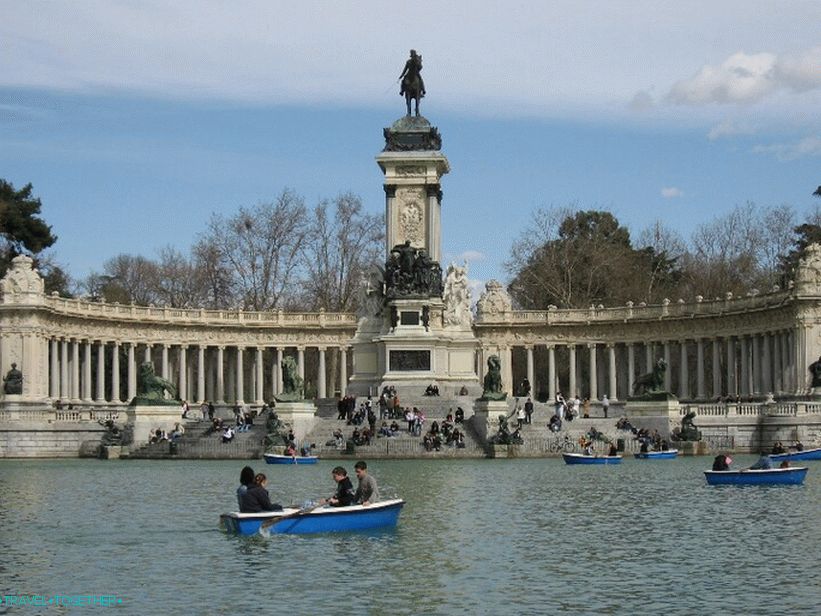 Retiro Park
Retiro Park
Retiro Park is the largest and most famous park in Madrid. Him The area is approximately 1.5 square kilometers. A park located on the outskirts of the historic center. This is a great place. for walking.
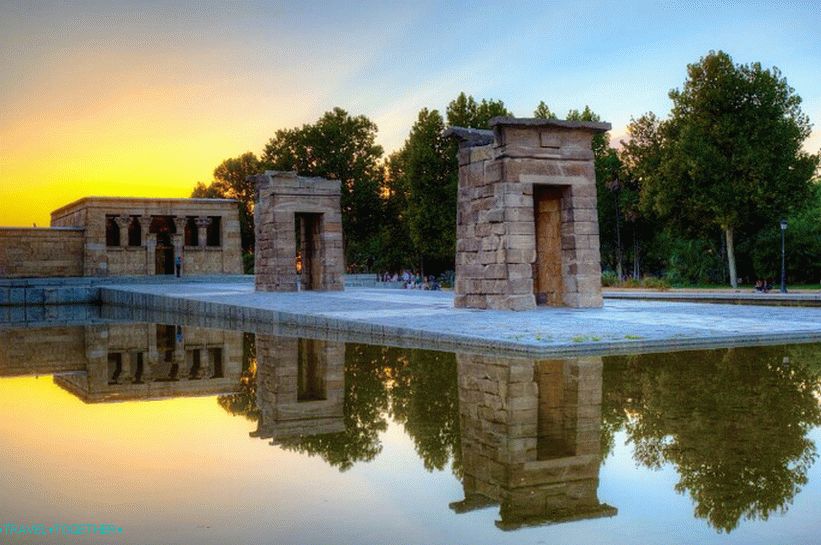 Temple of Debod
Temple of Debod
Temple Debod – an unusual monument near the Plaza of Spain. This ancient Egyptian temple dates back to the second century BC and was given to Spain in gratitude for the help in building Aswan Dam.
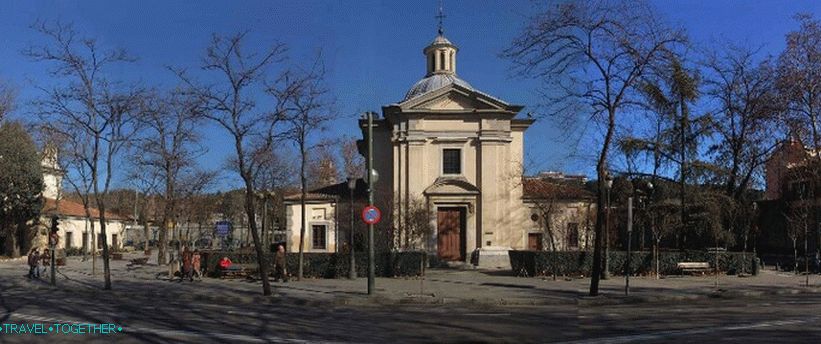 Hermita de San Antonio
Hermita de San Antonio
Hermita de San Antonio – a small chapel with fantastic the frescoes of Goya near the Royal Palace.

Basilica de San Francisco El Grande – Franciscan Church 18 century. It has a neoclassical facade and dome.
 Santiago Bernabeu
Santiago Bernabeu
Santiago Bernabéu – one of the most famous football stadiums of the world. Home arena of Real Madrid.
Largest museums:
- The Prado Museum is the largest and most famous museum in Madrid. Here collected more than 5,000 paintings that compete with the collection of the Louvre in Paris Most of the collection – Spanish paintings from XII to the beginning XIX century, many of which are famous masterpieces. The museum’s exhibits also cover the Italian, Flemish, french, british and german painting as well neoclassical italian sculptures.
- Centro de Arte de Reina Sofía is a museum of modern art. The elegant modern building is reminiscent of the Pompidou Center in Paris. The art collection includes Juan’s wonderful masterpieces. Miro, Pablo Picasso and Salvador Dali.
- Thyssen-Bornemisza – Museum of Fine Arts. AT The collection features about 1,000 works of art. Collection covers the Renaissance, Baroque, Rococo, Romanticism, impressionism, fauvism, expressionism, modern art and pop Art.
- National Archaeological Museum – has a rich collection artifacts from prehistoric times to the XIX century.
- The Lazaro Galdiano Museum is a private collection of the financier Galdiano. The museum has an extensive collection of about 9,000 works. art exhibited in 30 rooms.
Video
Maps and guides
Tourist Map of Madrid Metro Food and Cuisine






